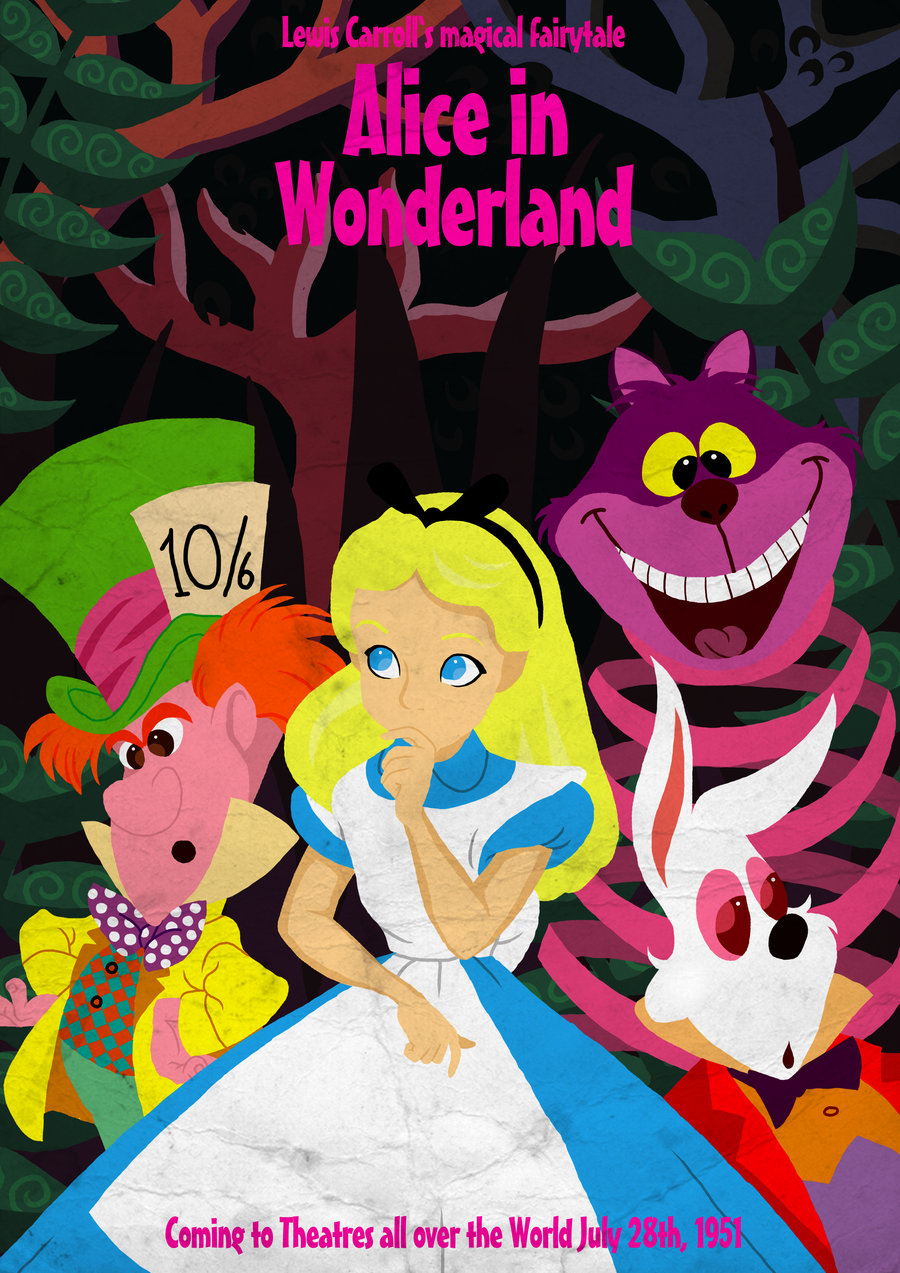
Disneyland also has a conventional dark ride based on the film, and Disneyland Paris has a Wonderland labyrinth. note Shanghai Disneyland uses hunny pots instead of teacups. It inspired three attractions in the Disney Theme Parks, most prominent being the famous spinning teacups ride, which each resort has a variation of. Some years of Development Hell turned the film into a more wacky, comedic, and very odd entry in the Disney canon.


Then World War II happened and they lost a lot of their budget on war films. Walt Disney was a lifelong fan of the book and wanted to make it a decade earlier, but another production of the story was being produced elsewhere at the time, prompting the studio to shelve it for a while. A handpicked selection of stories from BBC Future, Earth, Culture, Capital, Travel and Autos, delivered to your inbox every Friday.Number 13 in the Disney Animated Canon, this 1951 adaptation of Alice's Adventures in Wonderland was a long time coming. Īnd if you liked this story, sign up for the weekly bbc.com features newsletter, called “If You Only Read 6 Things This Week”. If you would like to comment on this story or anything else you have seen on BBC Culture, head over to our Facebook page or message us on Twitter. Readers outside of the UK can see every BBC Britain story by heading to the Britain homepage you also can see our latest stories by following us on Facebook and Twitter.
#ALICE IN WONDERLAND CARTOON SERIES#
This story is a part of BBC Britain – a series focused on exploring this extraordinary island, one story at a time. Rather than look for meaning we’d do better to simply delight in the ride. And maybe that’s where the ultimate message of his exuberantly inventive book lies: the world is a mad place in which expectations are often frustrated. Though Dodson was a logician, Wonderland is a realm in which illogic rules.

Alice is confronted with a series of puzzles from the Mad Hatter’s riddle to the Queen’s croquet game, but try as she might to solve them, they invariably turn out to have little purpose and no answer. In his day job, Charles Dodgson lectured on mathematics, and it’s little wonder that his stories are teeming with arithmetical and geometrical allusions. In the wacky realm of rival theories, we all become as confounded as Alice. Alice is a parable of eating disorders, a cautionary tale about the then new-fangled symbolic algebra, a satire of the Wars of the Roses.

Our heroine feels uncomfortable in her body, which undergoes a series of extreme changes her sense of her self becomes destabilised, leaving her uncertain of her own identity she butts heads with authority and strives to understand seemingly arbitrary rules, the games that people around her play, and even death.Īnd on the debate rages. More nuanced readings have viewed Alice’s journey as being less about sex per se and more about a girl’s progress through childhood and puberty into adulthood. And then there’s the fanning that she does before she starts to shrink, and the salt water that laps her chin once she’s mere inches tall – both acquire a decidedly masturbatory glossing. Locks and keys were seen as symbolic of coitus, and the caterpillar – well, wasn’t he just a bit… phallic? Inevitably, some saw penis envy in the text, rendering Alice’s extending neck a kind of copycat erection. Re-examining the text, critics found plenty of gynaecological imagery, from the rabbit hole itself to the curtain that she must push aside. With the waning of Victorian prudery and the birth of psychoanalytical theory, Alice’s Adventures in Wonderland seemed a good deal less innocent.


 0 kommentar(er)
0 kommentar(er)
